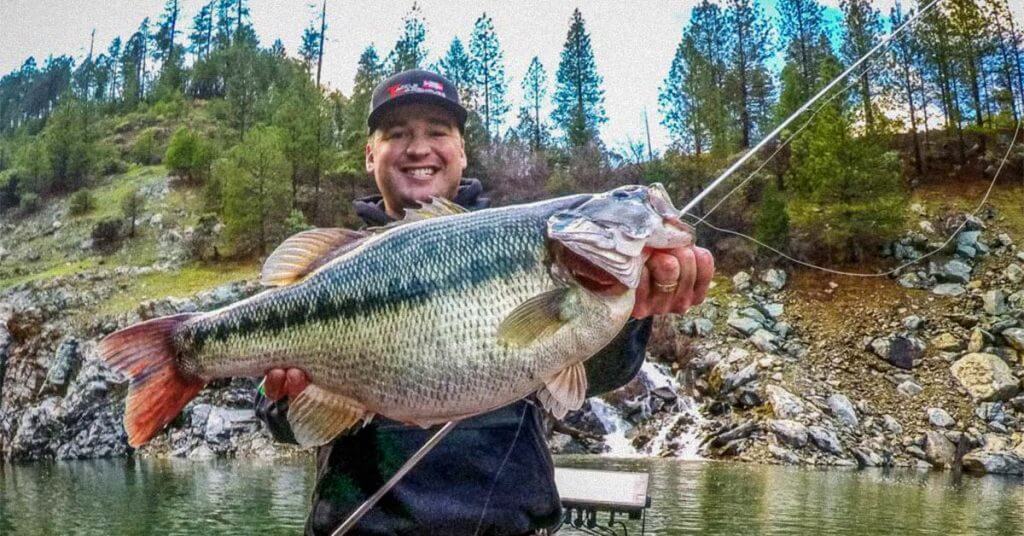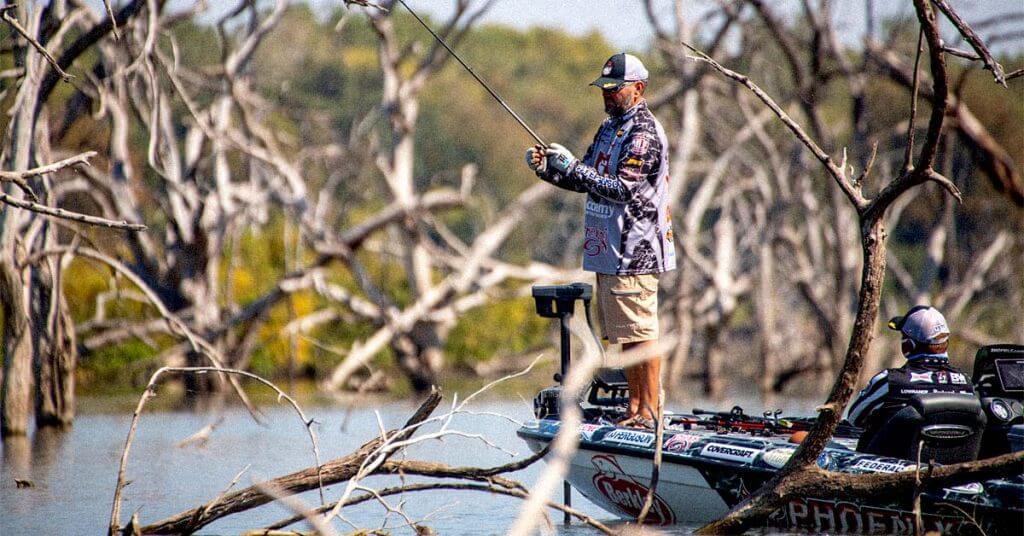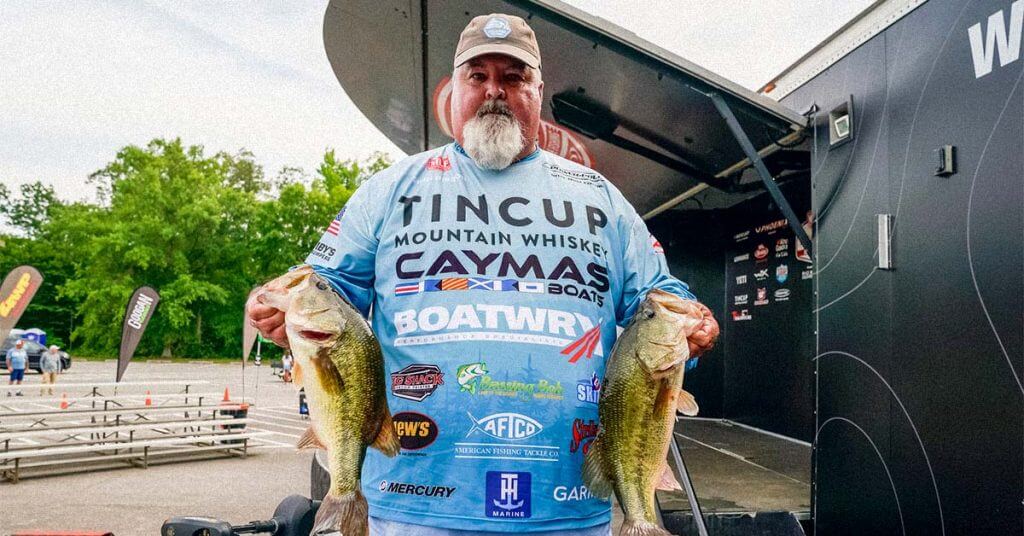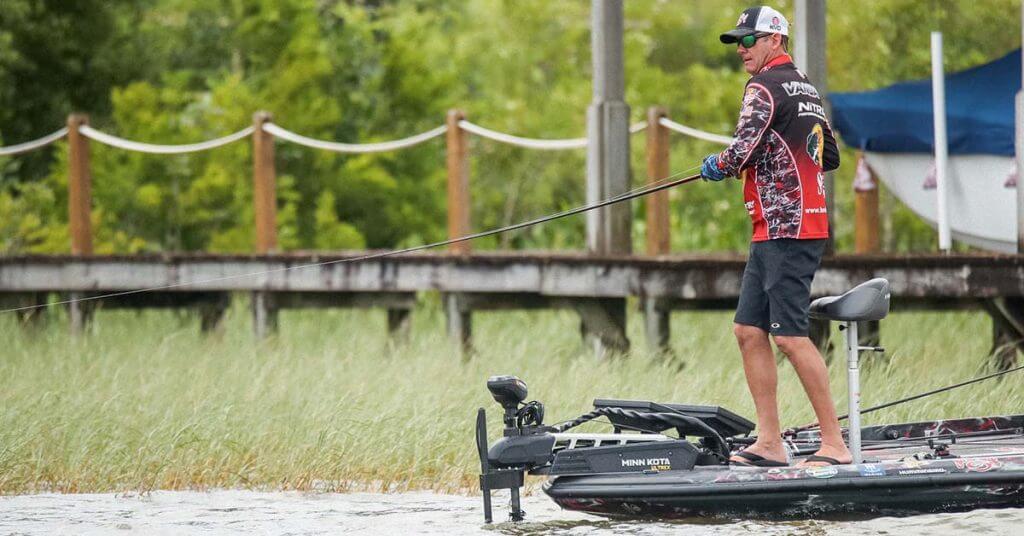It can be frustrating getting started in bass fishing.
What lures do I need? What type of rods and reels should I buy? Do I need a boat?
How much money should I spend? Where should I go? When will I have my best chance of catching something?
Admit it.
No matter how experienced you are now, you probably asked those questions when you were starting out.
In this column, we regularly discuss the pros’ advanced techniques to catch bass. But it’s time to take a few steps back and dedicate a column to the newbies.
We’ve asked some of the top names in the sport to provide shortcuts you can use in your journey to becoming a better angler. We hope it helps you land some big ones.
- KVD: Make Your Casts Count
- Jay Yelas: Determine the Bass' Mood
- Rick Clunn: Understanding Bass Behavior
- Clunn, Part II: Follow Nature's Clues
- Brent Chapman: Fishing Unfamiliar Water
- Mike Iaconelli: Dealing with Fishing Pressure
- Brian Snowden: Journaling
- Gary Yamamoto: Slow Down
- Dion Hibdon: Skip it
- Skeet Reese: Avoid Getting in a Rut
- Randy Blaukat: Be Stealthy
- Alton Jones: May the Force be with You

Kevin VanDam knows that accurate casts can go a long way toward catching bass (photo by Garrick Dixon/Major League Fishing)
KVD: Make Your Casts Count
According to bass-fishing legend Kevin VanDam, learning how to cast is the first thing a beginner can do to become a good bass fisherman.
“By really working on your casting accuracy, you can get a lot of reaction strikes by just putting your bait where bass are hiding,” he said. “And to be able to do it quietly, you aren’t going to spook them.
“Learning that underhand roll cast so that your lure lands softly is so important.”
VanDam advises beginners to start before they even get on the water. Set up plates and cups out in your backyard, and use a practice plug to test your accuracy. Make it into a game.
With enough repetition, you’ll be ready to cast to shoreline cover once you hit the water.

Jay Yelas advises inexperienced fishermen to keep it simple (Submitted photo)
Jay Yelas: Determine the Bass’ Mood
Beginners often make bass fishing too complicated, according to B.A.S.S. pro-Jay Yelas.
“I think beginners get overwhelmed,” he said. “They bring 15 rods when they go out, all with different baits tied on.”
“They need to determine the bass’ mood and keep it simple.”
If the bass are a bit tentative and want a slow presentation, Yelas suggest a green pumpkin color, Gary Yamamoto Senko.
If they are more active, he suggests fishermen start with a three-quarter-ounce Chatterbait with a plastic trailer.
Fishermen can branch out to other baits once they determine whether the bass want a slow presentation or a fast one. But those baits provide a good starting point.

Fishermen can benefit from learning about a bass’ predatory instincts, Rick Clunn says (photo by Seigo Saito/B.A.S.S.)
Rick Clunn: Understanding Bass Behavior
Fishermen can benefit greatly by learning about the bass’ role as a predator, says Rick Clunn, one of the greatest pro bass competitors of all time.
Start with the premise that the biggest fish are king. They get the choicest spots and the best meals.
But that doesn’t mean they’re out imposing their will 24/7 on lesser bass.
“A big bass isn’t going to be out chasing a bunch of small minnows,” Clunn said. “It’s going to hide in the thickest cover it can find and wait for a big bream or gizzard shad to swim by.”
“They aren’t chasers, except for a small window of time each day.”
So where are they going to be most of the day? In the hardest-to-reach–and often least disturbed–cover they can find.
That might be the middle of a thick brush pile, the water behind dock cables, or the darkest spot they can find.
“Big bass like big baits,” Clunn said. “A big topwater bait can be good because it looks like a baitfish up top that’s struggling.”
“It’s the same as a lion stalking a herd of buffaloes. That bass is looking for the weakest individual. “That’s what you’re trying to imitate.”
Clunn, Part II: Follow Nature’s Clues
If you plunk a keeper bass into the live well, it may reveal some clues as to what the fish are feeding on.
“It might cough up a crawdad or a shad,” Clunn said. “That will give you an idea of the size and color of what they’re eating.”
Similarly, nature reveals clues about bass locations. Schools of shad may surface, and birds may dive to feed on those baitfish. If that happens, there’s a good chance baitfish are nearby.
“If I’m in an area holding big gizzard shad, I know there’s a chance that big bass won’t be far away,” Clunn said. “I’m going to use a big bait and work that area thoroughly.”
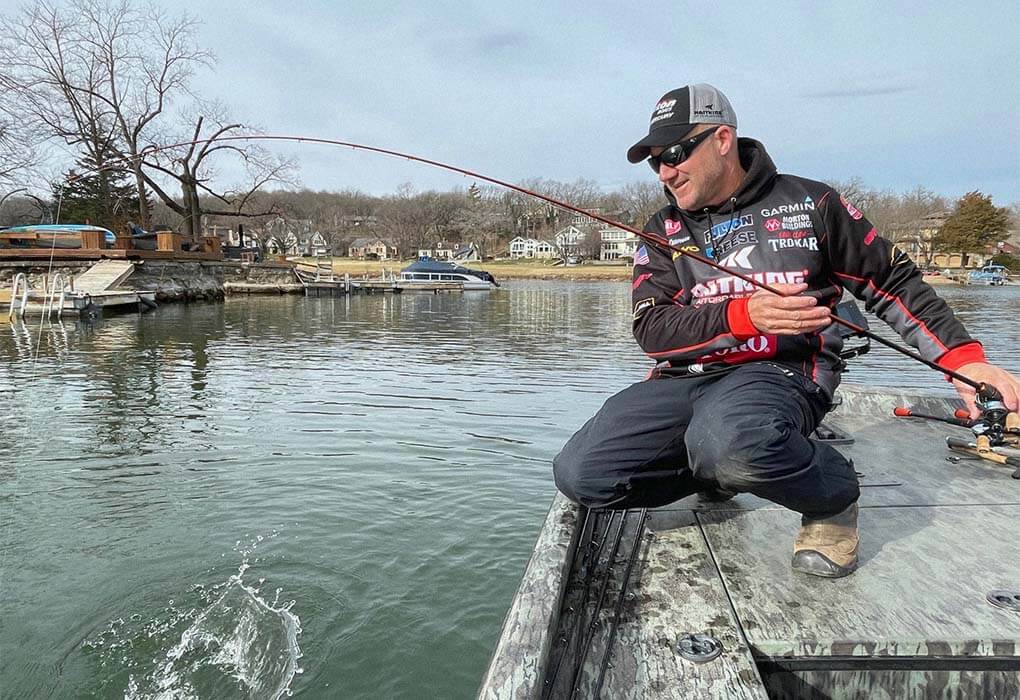
Fishing a lake, you are unfamiliar with? Pro angler Brent Chapman knows there are shortcuts to finding success (photo by Brent Frazee)
Brent Chapman: Fishing Unfamiliar Water
Don’t be intimidated if you’re fishing a big reservoir you’ve never visited before.
Brent Chapman, one of the top fishermen on the Major League Fishing Bass Pro Tour, advises finding an arm that offers lots of options and spending time learning that area before you move on.
“If I go out in practice and try to cover a big lake, I’m spreading myself so thin that it ends up not being that productive,” he said. “But if I spend three days in one cove or creek arm, I learn what works and what doesn’t.”
If all else fails, fish points, he said.
“Any time of year, you can’t go wrong fishing a point.,” he said. “A point that offers depth options gives them different places to set up. They might be shallow one day, then out in 30 feet of water the next day.
“But they’re not going to have to move far to find what they need.”
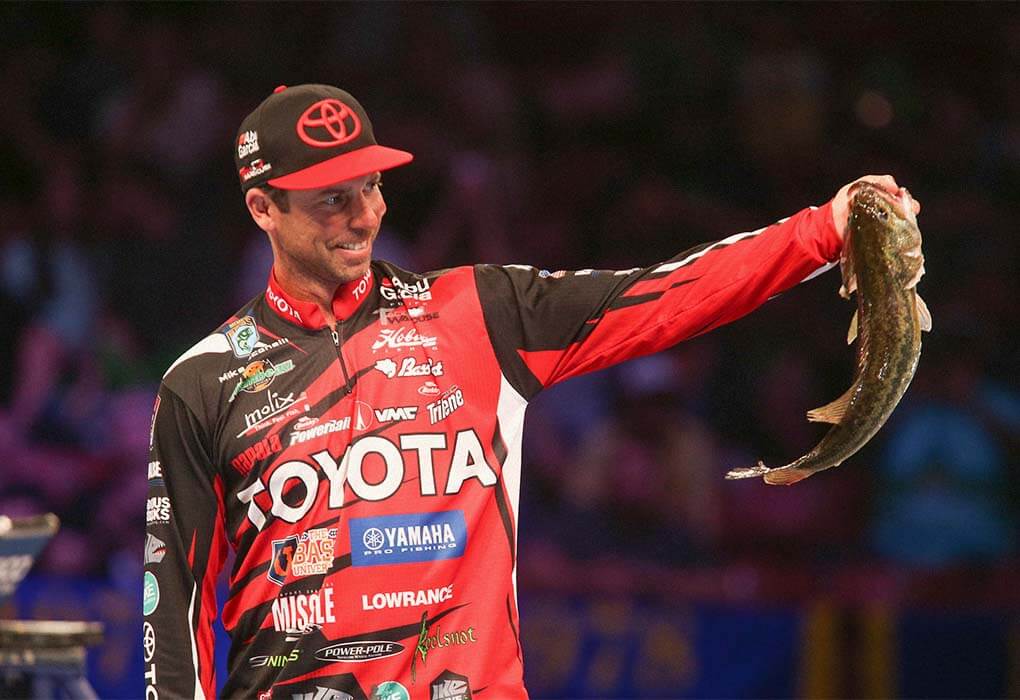
Mike Iaconelli knows fishermen must adjust when trying to figure out the bite on a lake that gets heavy fishing pressure (photo by Seigo Saito, B.A.S.S.)
Mike Iaconelli: Dealing with Fishing Pressure
Can bass get conditioned to avoid specific lures they see a lot?
Mike Iaconelli certainly thinks so.
“I’ve seen too many times when the fish get smart; they get skittish on lakes that receive heavy fishing pressure,” he said. “They get conditioned to certain baits, and the bite wanes.”
But that doesn’t mean they won’t hit, Iaconelli said.
“New techniques, new baits, varying retrieves, reaction bites, color—that’s all part of it,” he said. “If you react and give them something new, they’ll still hit.”
“You just have to adapt and quite trying to force-feed them something that has always worked in the past.”
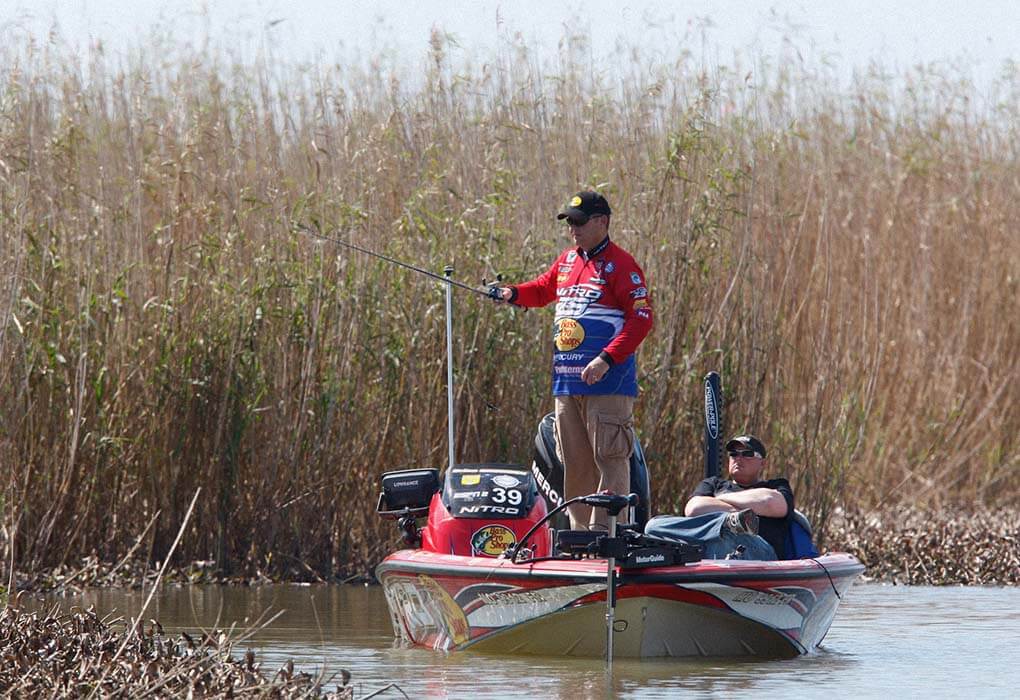
Brian Snowden keeps a journal to reference what worked in past years (photo by B.A.S.S.)
Brian Snowden: Journaling
Brian Snowden doesn’t have to rely on his memory to remember what worked and what didn’t on the bodies of water he fishes.
He keeps a journal with specific information about water and weather conditions, types of baits that caught bass, and techniques that worked.
“Fishermen can benefit by keeping a journal,” Snowden said. “I keep track of what I did, what the fish did under certain conditions.
“It gives me a starting point–which lures to select, what goes on at that lake at that time of the year, places where I caught fish in that season in the past.”
Snowden’s journal also notes locations of suitable habitats and spots that have been productive in the past during the bass, shad, and bluegill spawn.
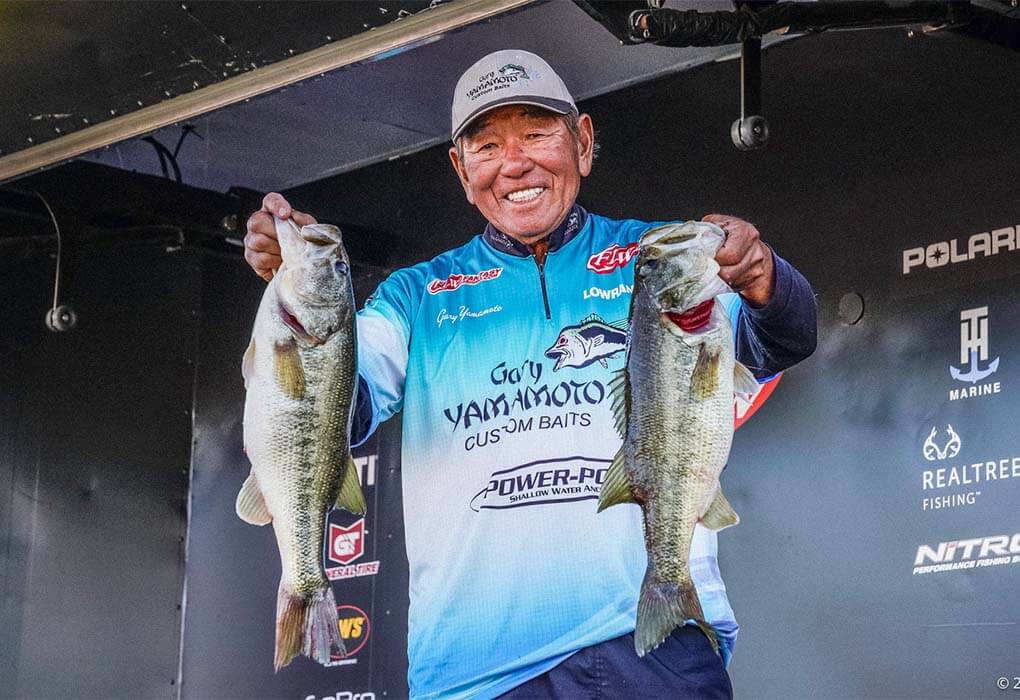
Gary Yamamoto advises fishermen to take a slow approach to catch more bass (photo by Jacob Fine/Major League Fishing)
Gary Yamamoto: Slow Down
Gary Yamamoto notices a common flaw in beginners who fail to catch bass: they fish too fast.
“I can go down to the lakes on my land and catch fish even when no one else is,” he said. “The reason is that others throw crankbaits or other lures that you retrieve quickly.”
“I tell them to slow down, but many fishermen don’t want to do that.”
Yamamoto catches fish on the Senko plastic stick worm he invented by letting it sink, then moving it two or three feet and letting it drop again.
“I guess it looks like something easy for the bass to get a hold of,” he said. “Once they do, they can taste the salt and hang on.”
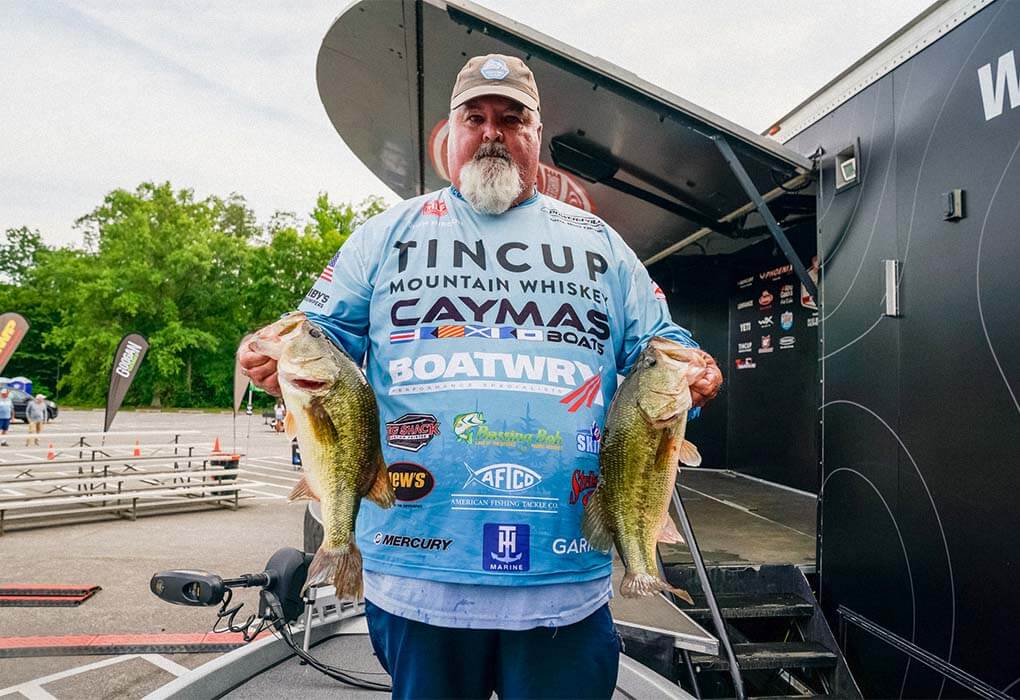
Dion Hibdon often targets boat docks when fishing his home water, Lake of the Ozarks (photo by Jacob Fine/Major League Fishing)
Dion Hibdon: Skip it
If you were good at skipping rocks when you were a kid, you can apply that same technique with your fishing lures and catch big bass.
Take it from Dion Hibdon, a veteran bass pro. He specializes at skipping baits under docks at Lake of the Ozarks to reach undisturbed bass lazing in the shade.
“The bass love to suspend under docks where they don’t see a lot of lures and feel protected,” Hibdon said. “They have a lot of bluegills, shad, and crawdads to feed on, and that’s what I try to imitate.
“It takes a lot of practice, but I can skip a jig clear through a dock. I’m hitting a lot of good water that way.”
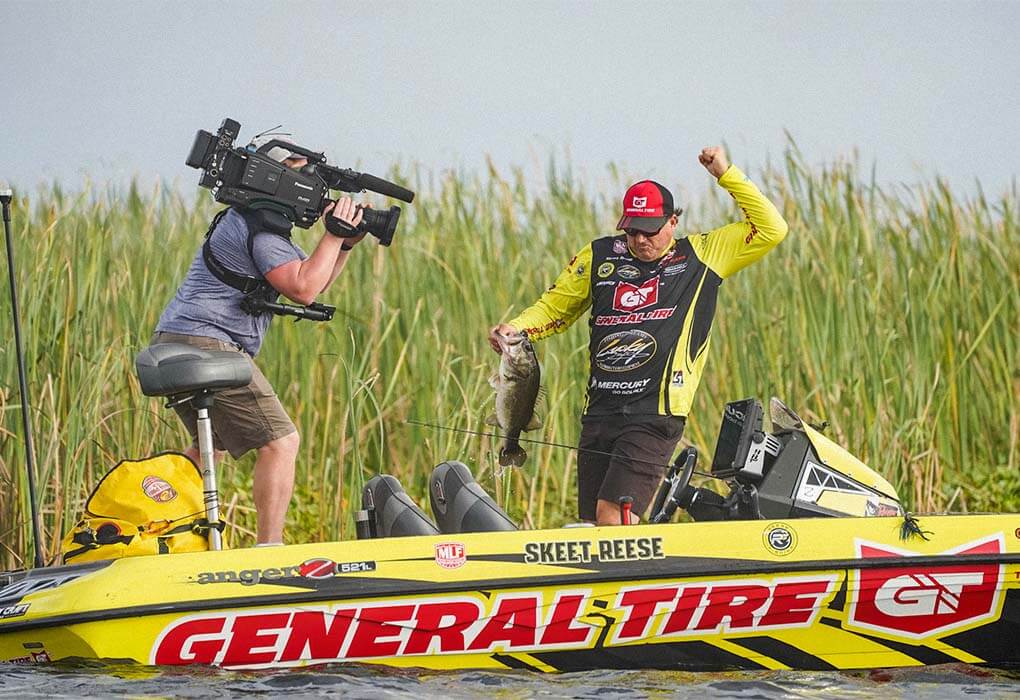
Skeet Reese encourages beginners to learn bass behavior and adjust to conditions and the change in seasons (photo by Rob Matsuura/Major League Fishing)
Skeet Reese: Avoid Getting in a Rut
Beginners tend to develop their favorite spots. When they catch bass on one bank, they tend to go back there time and time again.
But just because the bass is there in the spring doesn’t mean they will be there in the summer heat.
Longtime pro Skeet Reese encourages beginners to study bass behavior and get a rough idea of where they will be by season.
“Just because they bit a spinnerbait yesterday doesn’t mean they will bite it today,” he said. “You must study how bass react to different conditions–wind, calm, sunny, overcast, cold front, heat, whatever.
“Time on the water is the key. We all learn from our mistakes. Learning how to adapt makes you a better angler.”
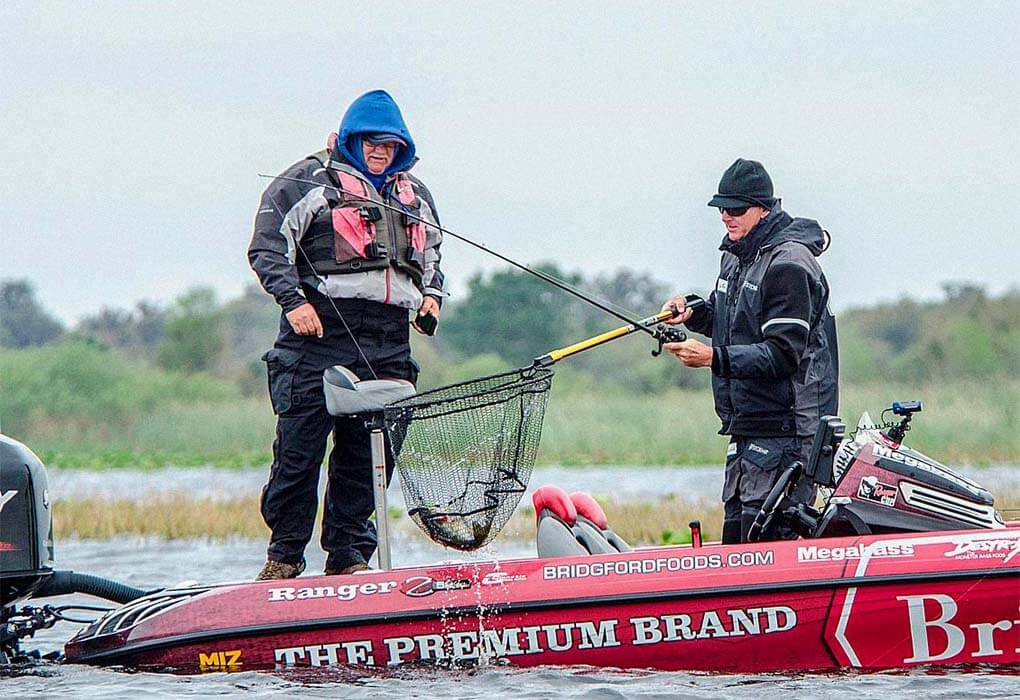
Bass pro-Randy Blaukat advises beginning fishermen to use stealthy tactics when approaching bass (photo by Rob Newell/Major League Fishing)
Randy Blaukat: Be Stealthy
Remember when grandpa told you to be quiet because you would scare the fish away?
Well, he was partly right. Bass can’t hear voices, but they can be frightened by loud sounds such as a boat banging into a flooded tree or rock, or something dropped in the boat.
That’s why fishermen should use stealth when approaching water they intend to fish, said Randy Blaukat, longtime pro fisherman.
“Bass get conditioned to noise,” he said. “You don’t want to go crashing into a spot you plan to fish. And use lures that don’t telegraph themselves.
“That’s why a Senko is so good. It’s subtle. It doesn’t make a loud splash when it lands, and you can work it without making much commotion.”
The same is true for flipping or pitching a jig to shallow cover, Blaukat said. Fishermen can lay the bait on shallow cover with a quiet entry using an underhand cast.
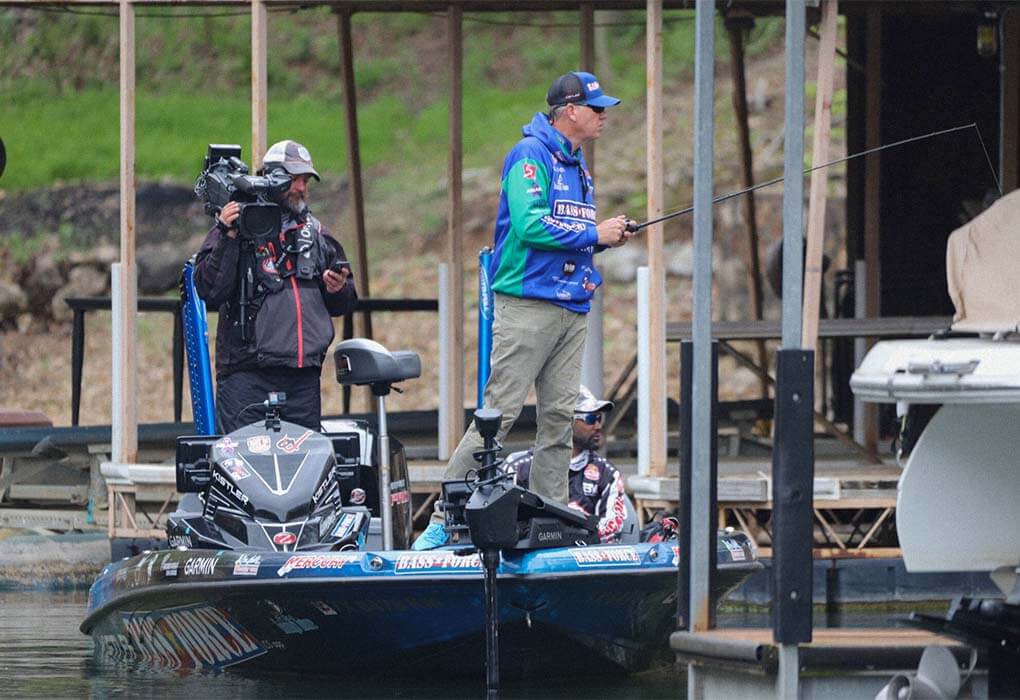
Looking for shortcuts on what lure to use? Alton Jones recommends going to a new app on your cell phone (photo by Phoenix Moore/Major League Fishing)
Alton Jones: May the Force be with You
Inexperienced bass fishermen often struggle with knowing what lure to use in different situations. But a new app eliminates some of the guesswork.
Longtime pro-Alton Jones recommends the BassForce app, which allows fishermen to type in water, weather, and fish conditions, then get advice from the pros.
Jones joins eight other pros–Kevin VanDam, Jacob Wheeler, Edwin Evers, Skeet Reese, Brandon Palaniuk, Jason Christie, Gerald Swindle, and the late Aaron Martens–in providing the lures they would use in those conditions.
The app is free for the top two lures each bass pro recommends. There is a charge for the premium version, which provides the top five lures they would use.
We want to know your summer bass fishing tip in the comments!

